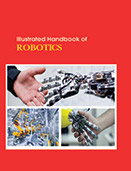Engineering and Technology

Over the last 50 years, there has been extensive research into robotics and intelligent systems. Although much of the research has targeted specific technical problems, advances in these areas have led to systems and solutions that will profoundly impact society. Underlying most of the advances is the unprecedented exponential. When people think of robotics, they often think of popular images of robots in movies, such as R2D2 in StarWars. Increasingly, robots are becoming available as consumer products, such as the Roomba vacuum-cleaner robot and the Aibo walking robotic dog. But these stereotypical images can be misleading. Walking and rolling robots represent just one type of robotics. Robotics includes all types of programmable machines that perform actions based on inputs from sensors—everything from a home security system that sounds an alarm when it detects motion to a greenhouse that regulates its temperature and humidity. In recent years, robotics has become popular as an educational activity internationally. A growing number of schools and other educational organizations are offering opportunities for young people to build their own computer-controlled robots, using programmable construction.
Illustrated Handbook of Robotics covers a fair amount of kinematics and dynamics of the robots. It also covers the sensors and actuators used in robotics system.
Robots in antiquity and through the Middle Ages were used primarily for entertainment. However, the 20th century featured a boom in the development of industrial robots. Through the rest of the century, robots changed the structure of society and allowed for safer conditions for labor. Industry has benefited drastically from the expanse of a robotic work force. Automated machines have taken over the duties of dangerous and mundane jobs from humans, allowing greater productivity. Because robots never tire, extra shifts have been added to factories. Farmers have taken advantage of new technology with automated harvesters, the waste disposal industry has implemented robots in some of its dirtier jobs, and the medical industry benefits from advancements in assisted surgical robotics.
This Illustrated Handbook of Robotics examines strategies for introducing students to robotics technologies and concepts, and argues for the importance of providing multiple pathways into robotics, to ensure that there are entry points to engage young people with diverse interests and learning styles.
This book will be useful for mechanical, electrical, electronics and computer engineering students.